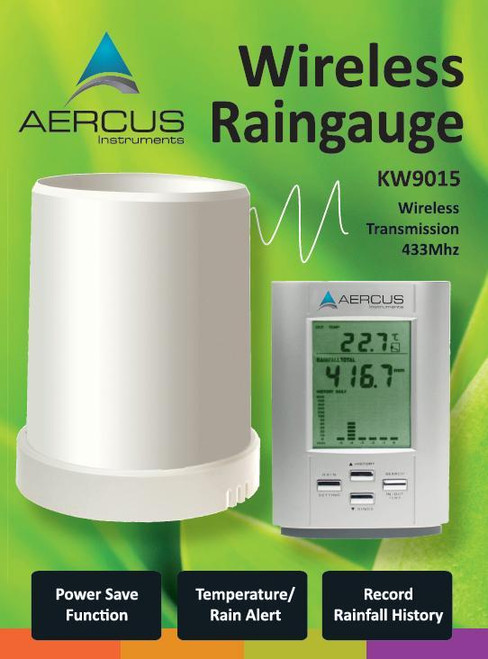How a Rain Gauge Can Enhance Your Understanding of Local Environment Patterns
How a Rain Gauge Can Enhance Your Understanding of Local Environment Patterns
Blog Article
Revealing the Scientific Research Behind Rain Gauges: Exactly How These Instruments Play an Essential Duty in Climate Research Study and Environmental Surveillance
Rain assesses, relatively straightforward devices, hold a profound importance in the world of environment research study and ecological tracking. These unassuming tools silently gather one of nature's most important elements-- rains. Behind their plain facade exists an intricate science that is crucial for understanding the characteristics of our environment. As we peel back the layers of this clinical veil surrounding rain determines, we uncover a globe where precision, data precision, and precise monitoring merge to unveil a deeper understanding of our changing climate and its effect on the earth.
Significance of Rain Gauges
Rainfall evaluates play an essential duty in surveillance and determining precipitation degrees, giving important information for environment research study and evaluation. These gadgets are fundamental in evaluating the amount of rainfall that happens in a specific location over a specific period. By gauging and accumulating rainwater, rain assesses deal valuable insights right into the circulation and intensity of rainfall, aiding meteorologists, hydrologists, and climatologists in recognizing weather condition patterns and patterns.
Furthermore, long-lasting data gathered from rain determines aids in analyzing climate change impacts and patterns, contributing dramatically to scientific research study and decision-making processes. In essence, rainfall determines serve as crucial tools in the field of meteorology and ecological science, playing a crucial duty in progressing our understanding of climate and climate dynamics.
Types of Rainfall Scales

Capability and Procedure
In the realm of environment research and meteorological researches, the effectiveness of rain evaluates lies in their detailed functionality and precise functional devices. Rainfall determines are created to accurately determine the amount of rainfall that drops over a specific location throughout a collection duration.
The capability of rainfall evaluates is based on the principle of collecting and measuring rainwater in a standardized way. This collected information is crucial for understanding neighborhood climate patterns, tracking long-lasting environment fads, and examining ecological influences. To make certain precise dimensions, rain assesses demand to be strategically placed in open areas far from blockages such as structures or trees that could conflict with the collection process.
The operational facet of rainfall evaluates includes regular maintenance to avoid debris build-up, calibration checks to keep measurement precision, and information tape-recording for evaluation (rain gauge). Generally, the functionality and procedure of rainfall gauges are necessary for gathering reputable precipitation data crucial to environment research study and environmental surveillance
Role in Climate Research Study
Given the vital significance of exact rainfall measurements in understanding climate patterns and ecological influences, the function of rainfall determines in environment research is crucial. Rainfall gauges supply necessary data for climate study by measuring the amount of rainfall that falls over a specific location throughout a provided period. This data is vital for monitoring lasting patterns in precipitation patterns, evaluating the influence of environment adjustment on rains circulation, and enhancing climate models.

Climate scientists make use of data collected from rainfall determines to examine variations in rainfall degrees, discover this identify regional environment fads, and evaluate the effectiveness of water source management strategies. By contrasting historical precipitation information with present measurements, researchers can find changes in rainfall patterns, such as adjustments in the regularity or strength of rainfall events. This details is crucial for recognizing just how climate change is influencing rainfall dynamics and can aid policymakers make informed decisions concerning adjustment and mitigation strategies.
Applications in Environmental Tracking

In flooding forecasting, rainfall gauge data aids to track rains intensity and distribution, allowing authorities to issue prompt cautions and take required measures to mitigate flood risks (rain gauge). Dry spell monitoring counts on rain scale information to examine dampness degrees in the dirt and track precipitation shortages, aiding in the recognition of drought-prone areas and the implementation of drought reaction approaches
Additionally, rainfall gauge information plays a crucial duty in water resource monitoring by offering details on water schedule and usage trends. This information is used to make educated decisions pertaining to water allowance, preservation steps, and lasting water resource preparation. Additionally, in agriculture, rainfall scale information assists farmers in maximizing irrigation schedules, plant option, and overall farm administration methods based upon local precipitation patterns. Overall, rain assesses are important tools in environmental tracking, providing useful insights that contribute to notified decision-making and lasting resource management.
Conclusion
Finally, rain determines are necessary devices for gauging rainfall, supplying important information for environment research and ecological monitoring. With different kinds and performances, useful link rain determines play a vital duty in recognizing rainfall patterns and their influence on the environment. By accurately measuring rainfall, these gadgets add to the development of scientific knowledge and assistance in making notified choices associated to water resource administration and calamity readiness.
Rain evaluates play a vital function in monitoring and gauging precipitation degrees, offering necessary data for environment research study and analysis. The basic rainfall gauge, known as the "tipping pail" gauge, is one of the most frequently utilized gadgets. Ultrasonic rainfall assesses use audio waves to detect the existence of rainfall, providing real-time data on rainfall degrees.Climate researchers use data accumulated from rain assesses to evaluate variations in precipitation levels, determine local climate fads, and review the performance of water source management strategies.In final thought, rain determines are necessary devices for gauging precipitation, providing valuable data for climate research and ecological tracking.
Report this page